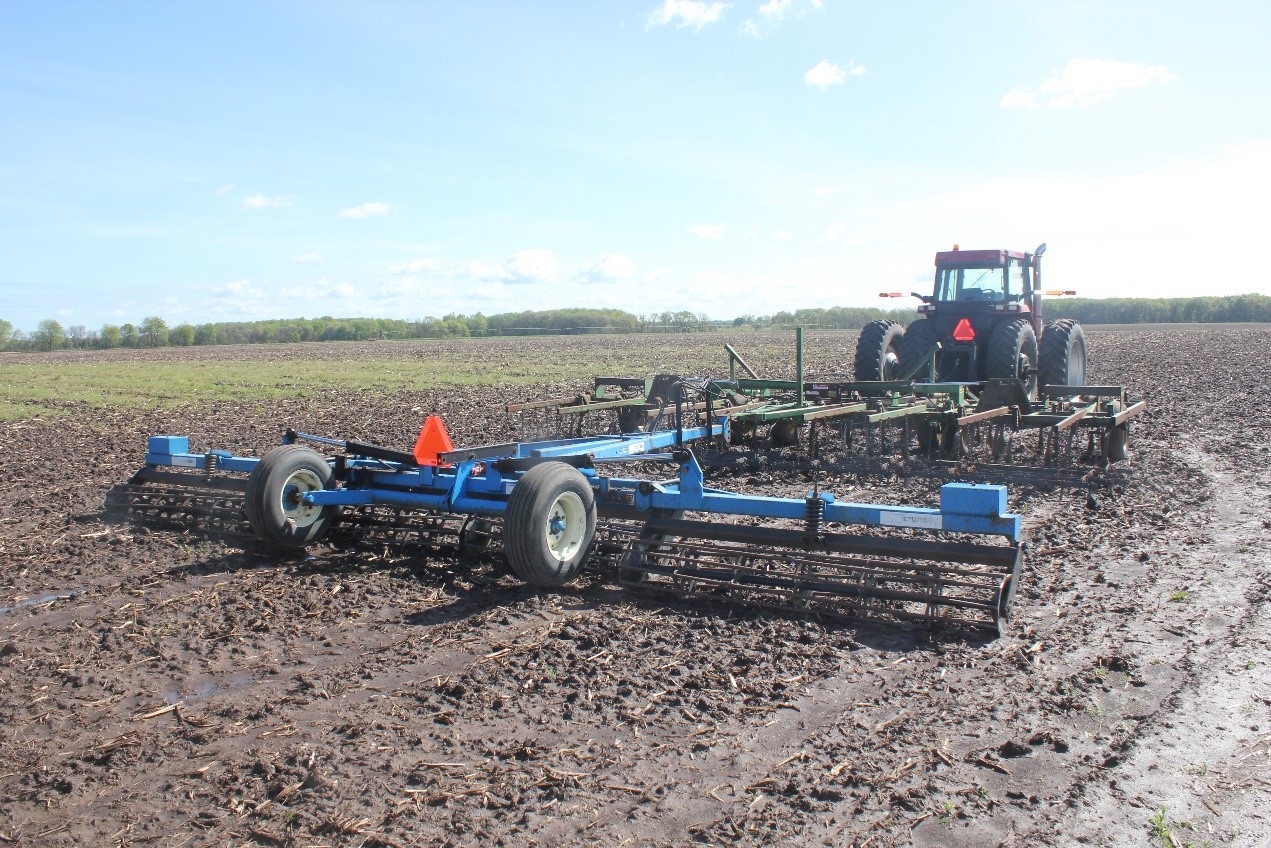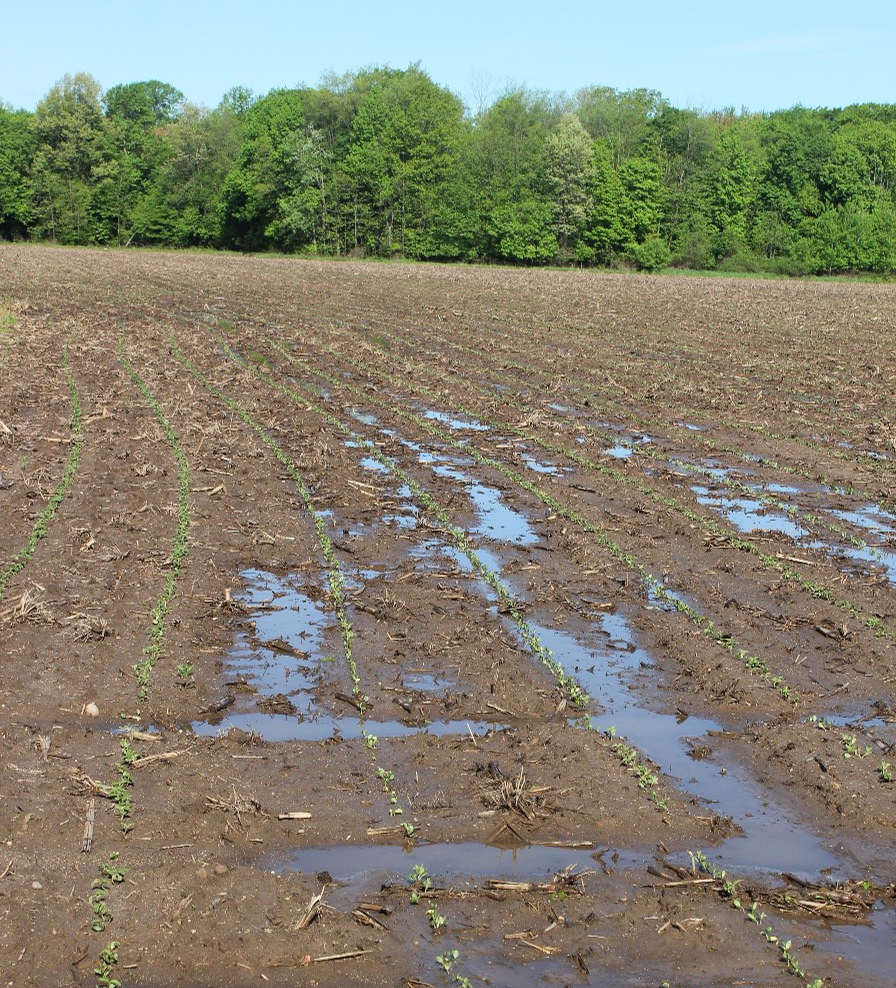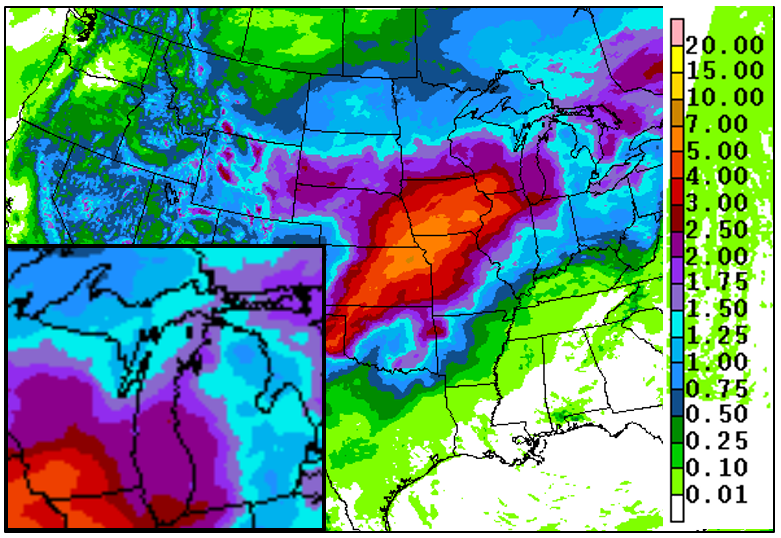Southwest Michigan field crop update – May 23, 2019
Southwest Michigan planting progress continues to crawl.

If a single word can describe a planting season, 2019’s word would be wet. Two words: too wet! Growers in southwest Michigan were able to make some progress dancing around thunderstorms on sandier fields this past week, but overall planting progress is still in the low teens for corn and maybe the upper single digits for soybeans. Bright spots in the region this growing season are St. Joseph and Branch counties, which have made substantially more progress than most other areas in southern Michigan.
Focus on figuring out if it is time to consider switching hybrids and soybean varieties to shorter day numbers. Also, focus on upgrading the lights on equipment so that when the weather does break, the 24-hour-a-day marathon to get crops in the ground will be at least well illuminated.
One thing the wet spring last year did teach us is that later planted crops can still do quite well. Soybeans planted well into June last season yielded in the 65-bushel range. Shorter day corn was yielded very well. Conditions that follow the delayed planting have the most important impact on the success of the later planted crops. Warm weather really helped later planted corn catch up last season. We can anticipate these kinds of conditions will be important in 2019 as well.
See the “Weather” section at the bottom of this article for more information on the forecast and current weather conditions.
Crops

Both corn and soybeans that were planted early are growing, with challenges coming from wet conditions.
We are the furthest behind in corn planting than we have been since the USDA began tracking this back in 1980. Currently, Michigan is 19% planted for corn and 10% for soybean. Some farmers will need to consider whether prevented planting will be a viable option for some of their acres this year. Black cutworm larvae can be found in some fields, so monitor for these pests if you have corn that is out of the ground. The most advanced fields of corn (Branch County) are at the three-to-four-leaf stage. Most remain either in the bag or have not yet emerged.
Opportunities to spray herbicides undoubtably have also been limited. Keep an eye on both crop size and weed size, especially when applying delayed pre-emergence programs. Erin Burns, MSU Extension corn weed control specialist, reminds us that maximum crop height for delayed preemergence herbicides is available in the 2019 MSU Weed Control Guide (Table 1H, page 53 in the printed corn section, page 37 in the online corn PDF file) and maximum weed height for effective control in corn (Table 1I, page 54 in print, page 38 in the online corn PDF file).
If you plan on using an insecticide for controlling cutworms that uses an organophosphate component, check Table 1L (end of the corn section in the weed guide) to see if there may be an interaction with the herbicide you used or plan to use. This table is also handy if you used a soil applied insecticide to see if the herbicide you hope to use will have an interaction with the soil insecticide used. We also occasionally get into issues with seed corn maggot in fields where heavy amounts of winter annuals killed by tillage are rotting on or near the soil surface. Watch stands for signs of moving backwards soon after emergence. Seed corn maggots impact the seed and the plant near the soil line. They can impact both corn and soybeans.

Early planted soybeans are growing very slowly in much of the area. Hopefully, warmer temperatures will help spur on growth.
Wheat continues to look quite good across southwest Michigan. There is a slight uptick in leaf diseases, but not as bad as expected given the extended wet conditions. Advanced fields are approaching the boot stage and flowering will probably occur in about two weeks. We have not seen much in the way of armyworm damage in wheat so far.
On the Field Crops Team’s Virtual Breakfast this week, wheat specialist Dennis Pennington sized up the wheat crop this year. He said wheat development is seven-to-10 days behind normal. Variability within fields is high with as much as three growth stages separating plants in the same field. This will make timing a head scab fungicide application difficult. The ideal timing would be when 50% of plants in the field have reached Feekes stage 10.5.1 when anthers can be seen on the head. Check the Fusarium Head Blight Prediction Center to see what the current risk is for head scab in Michigan.
If you have not been able to make a nitrogen application yet this year or think you might be short on nitrogen, Pennington said it’s not too late to make an application as the nitrogen uptake curve gets steep at this stage, but you will want to dilute the fertilizer to avoid burning the flag leaf.
Alfalfa continues to grow well in sandier fields with the moisture and cooler conditions. Continue to monitor for alfalfa weevil.
Weather
The only encouragement, if you can call it that, is that the rest of the Corn Belt is in the same situation as we are or worse. This past week, rainfall totals averaged 1.2 inches throughout the southwest and south-central region, but ranged from less than 0.5 inch to over 3 inches. We may have caught up just a touch on growing degree days (GDD), but we are still nearly a week behind. Soil temperatures are hovering in the mid-50s on average, so that should not be limiting.
According to MSU’s agricultural meteorologist Jeff Andresen, the jet stream is moving from southwest to northeast, which is expected to continue through the rest of the month and into early June. This will be bringing more chances of rain and a prime situation for moving southerly plant pests up to us. The 6-10-day outlook is calling for below normal temperatures and above normal rainfall, which won’t help as most of the ground is at 99% saturation.






 Print
Print Email
Email